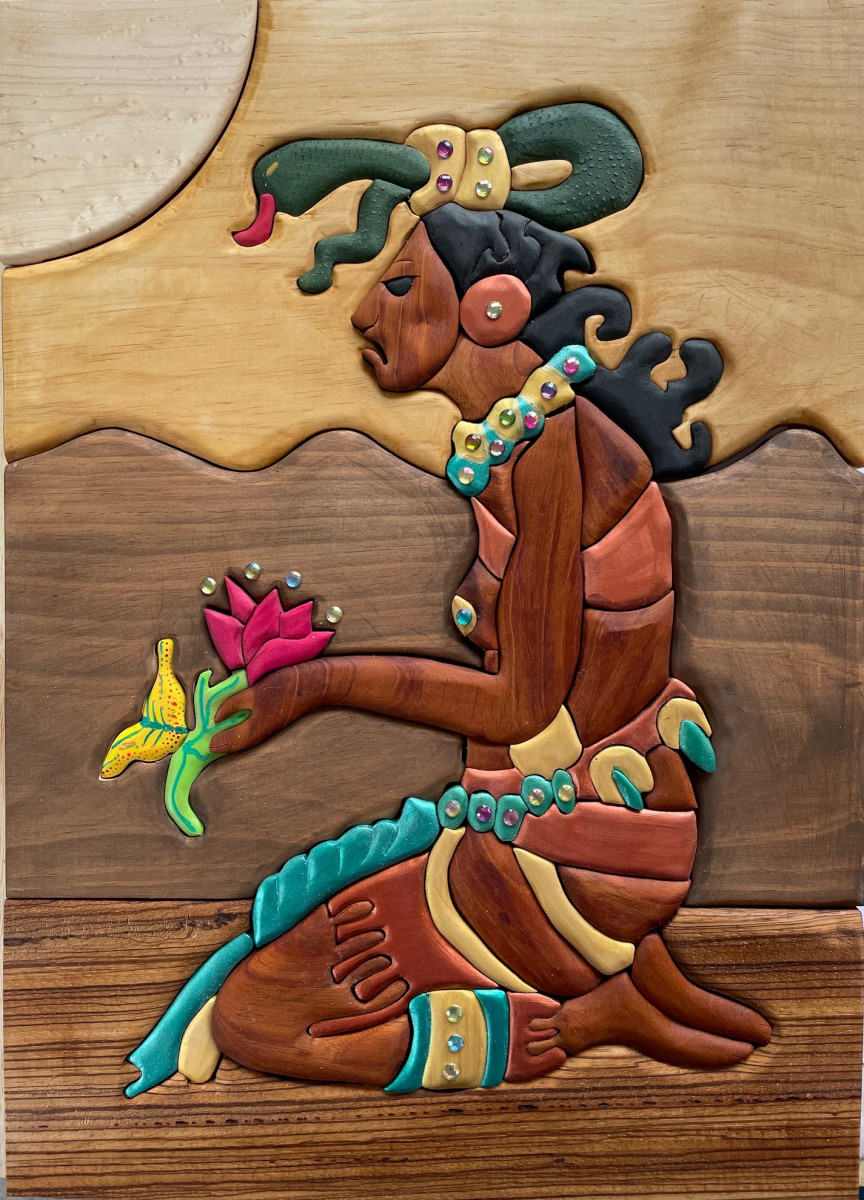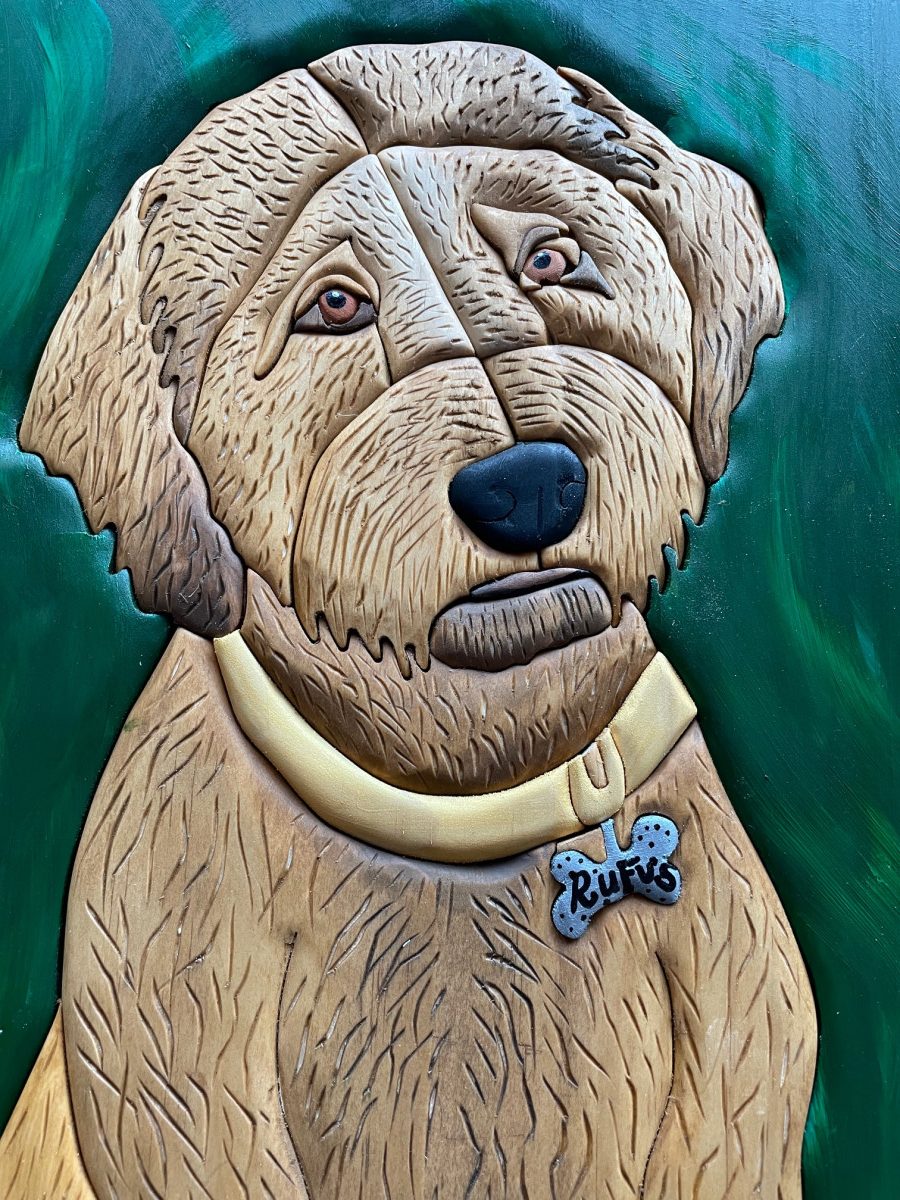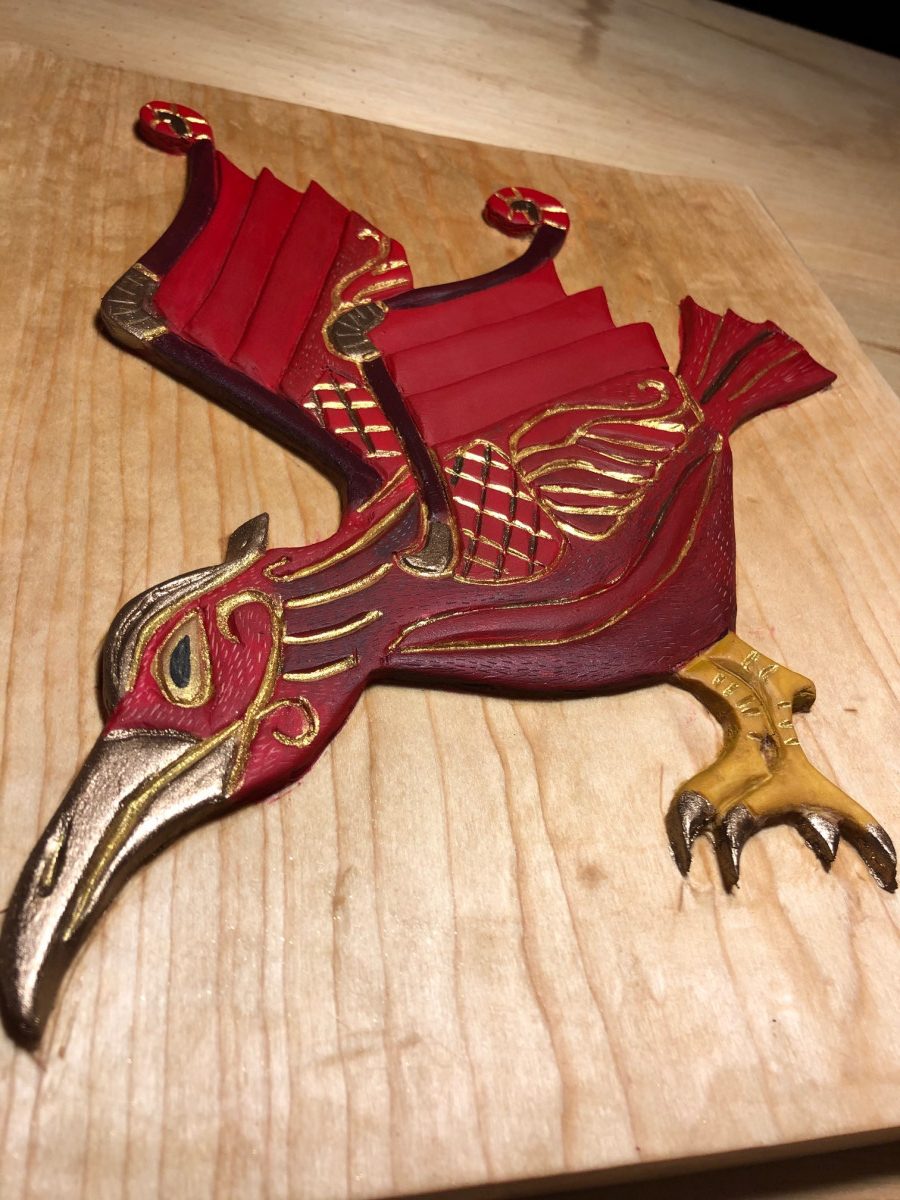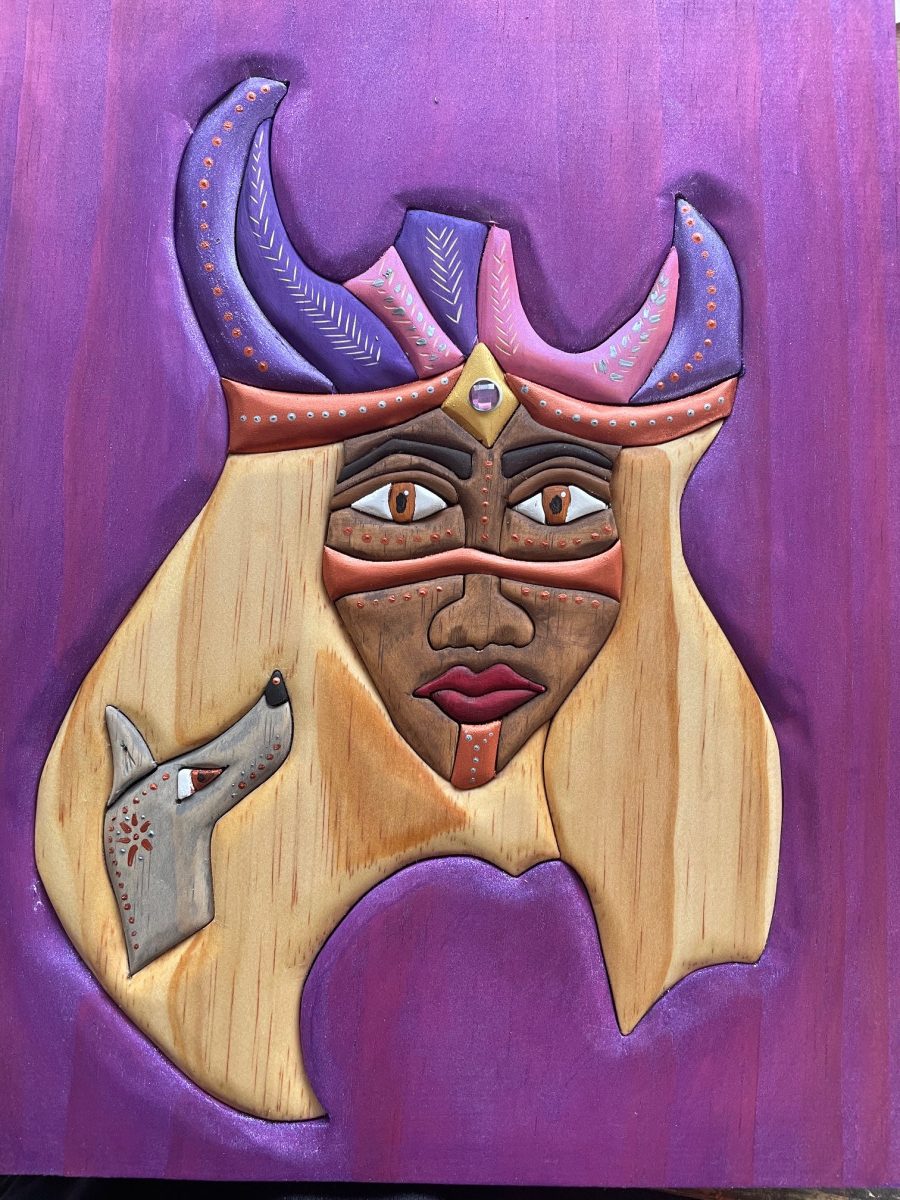We may receive a commission when you use our affiliate links. However, this does not impact our recommendations.

We’re interviewing makers from all 50 states. Today we’re featuring Astrid Beatriz, an artist and woodcarver from Oregon.
How did you get started woodworking? Who were your mentors?
My husband, Brent, is a trained luthier (he builds guitars) and graduated from Minnesota Technical University. I initially used chalk pastels as my artistic medium. My husband asked me if I had any interest in learning woodworking for my art. At that point, I had never used any power tools or woodworking tools. I read up on it, watched a few videos, and bought a few books from Lora Irish and fell in love. My husband taught me how to use the scrollsaw and the carving knives. I was sold! He was so patient with me. I transferred my art to wood and started cutting. I first created a practice board to get a feel for the knives and certain techniques. I experimented with relief carving and then graduated to intarsia. I now use a form of both for my art. I’m a very tactile person, which is why I used chalk for my drawings. Transferring to wood felt so natural and my hands loved the feel of it. I’m sure there are other methods of carving, but I find that using my knives gives me more control of how I want things to feel and look. My mentor is my husband, whom I’ve watched pour his heart and soul in his instruments. I didn’t understand how he could have the patience and be so meticulous, but I have a much better understanding with my own art. Every piece has to feel just right, not just look right, but I want you to feel the subject. Many of the pieces I have made have been inspired my dreams and a thirst for knowledge. When I see something, I wonder how it would look like captured in wood. Where would I draw my cut lines? How do you shape wood to make curly hair or wispy hair or piercing eyes? Everyday life provides inspiration for many artistic subjects.
As for who I look up to, oh my, Lucy Fox from Instagram @lucyfoxcarvings. I find her to be amazing and her work is outstanding. When I reached out to her with questions on how she got into the small spaces, she responded! She was so free with her advice and support. It made a difference. Another person is Brian Melton from Instagram, @roughcutcraft. Watching his progress and learning curve has been inspiring! Also, the women from @womenofwoodworking have made a huge impact on me. It helps to know that there are other women woodworkers out there too!
 What do you think is your best or favorite work? What kind of work do you do the most?
What do you think is your best or favorite work? What kind of work do you do the most?
My best work to date is the Mayan Goddess Ix Chel. I made her for an Indigenous exhibition, and she is 2ft x 1.5 ft and made from four different types of wood: Zebra, Mahagony, Bird’s Eye Maple, and Pine. Many of my personal art work comes from my dreams or my childhood memories. I was born in El Salvador and immigrated to the United States as a child, but I went back each Summer and lived with my family until it was time to go back to school in the States. My heritage and background is found in nearly all that I do. I also use my husband’s guitars a lot in my art pieces. I use his guitar templates and place my drawings inside, then make them into wood art pieces. I love the type of intarsia inspired pieces that I make. I don’t use a lot of different types of woods, I try to use wood that is easily replenished and sustainable.
 What advice would you give to someone that wants to start woodworking or pursue it as a profession?
What advice would you give to someone that wants to start woodworking or pursue it as a profession?
Try it! Practice! Learn safety first! Use the gloves and try each tool. Make yourself a practice board with notes. What technique did you try and like? What “accidental” curve did you make that turned out awesome! What feels right? Anyone can learn how to use the tools, but then you need to put your own spin on things and add your own personal magic. How do you hold the knife? How do you turn your hand to make it happen? How do you see the cuts of the lines? Sketch it out first, then try it. Keep trying. Ask questions, don’t be afraid to put yourself out there. Don’t give up, if it feels right. Also, be realistic. Become a woodworker because you love it, not because you are trying to make money. That comes later. Don’t work at something that you don’t like doing or feel is a burden to do. That may apply to anything else in life, but truly, I think woodworkers work at their craft because it calls to them.
 What’s your best hands-on tip or woodworking technique?
What’s your best hands-on tip or woodworking technique?
Using the wrap for my thumbs made a huge change for me. I didn’t even know you could do that, until someone suggested it and it was awesome! Less blisters. I also really love my palm held flexcut tools. They fit me and makes it feel like an extension of my hand as I work.
 Is there anyone you’d like to shout-out or recommend we follow? Who inspires you? (Doesn’t have to be woodworking related, either.)
Is there anyone you’d like to shout-out or recommend we follow? Who inspires you? (Doesn’t have to be woodworking related, either.)
Lucy Fox from @lucyfoxcarvings
Brian Melton from @roughcutcraft
Gerardo from @mezawoodndyes
Craig Boudrea from @art_intarsia
The Carpenter’s Lady from @carpenterladycraft
See more of Astrid’s work on her website or Instagram @atrumarte.


This interview was lightly edited for clarity.
Here are some supplies and tools we find essential in our everyday work around the shop. We may receive a commission from sales referred by our links; however, we have carefully selected these products for their usefulness and quality.








